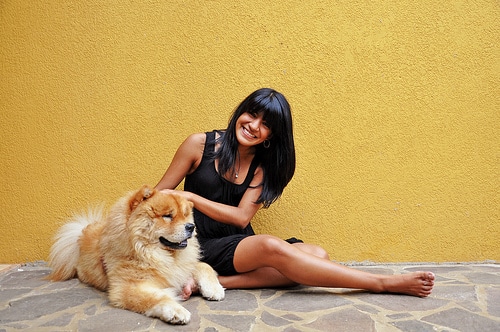Let’s be honest – we all want our furry four-legged friends to be well-behaved and responsive, especially when it comes to one crucial command: “Come!” But how many of us have experienced that heart-wrenching moment when our beloved dog decides to ignore us and run off into the distance? It can be frustrating, worrying, and even dangerous in certain situations. Fear not, fellow dog owners, for I am here to share some effective techniques to help you train your dog to come every single time.
Before we dive into the nitty-gritty of recall training, let’s remember that our furry companions are individuals with their own unique personalities, strengths, and weaknesses. Some dogs may be naturally more obedient, while others might have a touch of stubbornness in their DNA. Understanding your dog’s personality will be key in tailoring these techniques to their specific needs.
One technique that has proved successful time and time again is the “Treat and Retreat” strategy. It’s as simple as it sounds: call your dog by their name followed by the “Come” command, and when they respond and come to you, reward them with a delicious treat, a belly rub, or whatever they find most enticing. The key here is to give them a reward that truly motivates them. It could be a special treat they only receive during training sessions or their favorite toy. Over time, your dog will associate the recall command with positive rewards, making them more likely to come running when called.
I remember training my mischievous beagle, Buster, to come using this technique. I would call his name followed by “Come” while holding up a piece of bacon. The combination of his name, the command, and the irresistible smell of bacon worked wonders. Soon enough, he came running every time I called him, hoping to get a mouthful of that delicious treat. It’s important to remain consistent and patient, as mastering recall takes time and dedication.
Another technique that can aid in recall training is utilizing a long training lead. This is especially handy in open areas such as parks, where your dog has more freedom to explore. Attach a long lead to your dog’s collar or harness, and let them roam within a safe distance. When you call them, gently reel them back in using the lead, rewarding them with praises and treats. This technique provides a physical boundary, making it easier for your dog to understand where they should be and where they need to return to.
For my high-energy Labrador, Luna, this technique was a game-changer. I would call her from a distance, and if she didn’t respond immediately, I would gently reel her in using the training lead. It helped her understand the boundaries and reinforced the recall command. After a few sessions, Luna started to come back without needing the lead, knowing that there was a reward waiting for her.
One final technique that works wonders is incorporating play into your training sessions. Dogs love to have fun, and when they associate recall with an exciting game, they’ll be much more likely to come bounding towards you. Grab your dog’s favorite toy, throw it a short distance, then call them to come back, rewarding them with playtime and enthusiasm. Not only does this technique strengthen the recall command, but it also deepens the bond between you and your furry friend.
When training my energetic Jack Russell, Bailey, I used this playful technique with great success. I would throw his favorite ball, call him using the recall command, and when he returned, we would play a short game of tug-of-war or fetch. He soon realized that obeying the recall command led to a fun game, making him eager to come back every single time.
As with any training, consistency is key. Here are a few additional tips to keep in mind during your recall training journey:
1. Start training in a quiet and distraction-free environment before gradually introducing distractions.
2. Use a firm but positive tone of voice to maximize the effectiveness of the recall command.
3. Refrain from using the recall command unless you are confident your dog will respond. Repeating it without a response will only dilute its importance.
4. Keep training sessions short and frequent to prevent your dog from becoming bored or overwhelmed.
5. Celebrate small victories! Acknowledge and reward your dog’s progress, even if it’s just a small step towards mastering recall.
Remember, your dog’s safety and well-being are paramount. Always ensure you are training in a secure and controlled environment, especially when working off-leash.
So there you have it – some effective techniques to help you master recall training with your furry friend. With patience, consistency, and a little creativity, you’ll soon be able to enjoy the peace of mind and joy that comes from having a dog who responds every single time you call. So let’s grab those treats, training leads, and toys, and let the recall training adventure begin!
